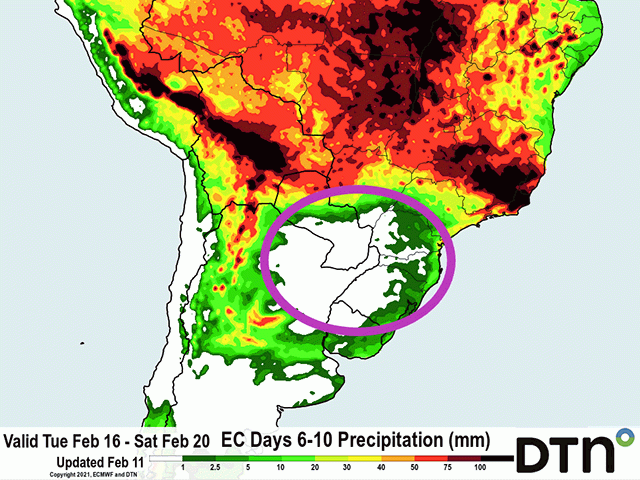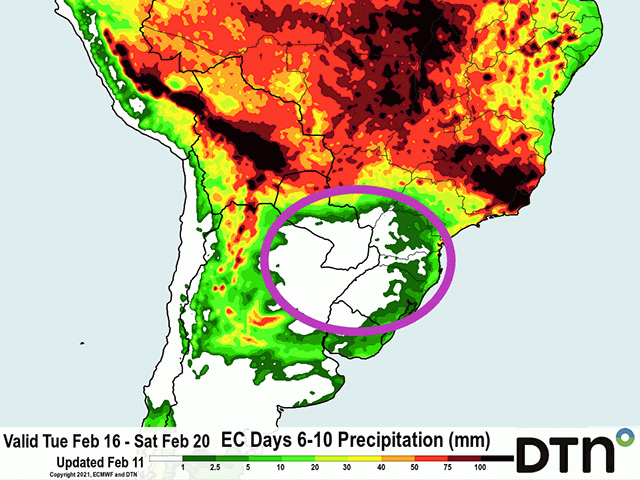South America Calling
One Window Closes, Another Opens?
The past 30 days have seen favorable rainfall cover southern and central Brazil. From Mato Grosso south to Rio Grande do Sul, 30-day precipitation is near to above normal. This has been very timely rain for filling crops following a dry start to the crop year. As a result, CONAB released on Feb. 11 that it raised its estimates for soybean production to 133.8 million metric tons, which would beat last year's record of 124.7 million metric tons by a significant margin.
However, the rainfall also interfered with the onset of soybean harvest and the beginning of safrinha (second crop) corn planting. (Safrinha corn makes up 75% of Brazil's total annual corn production.) The late start to the soybean season already pushed corn planting back and the showers have only added to the delays. However, that window late last week into early this week has likely had a positive impact on fieldwork. We do not have harvest numbers yet for soybeans in Brazil through the dry spell.
P[L1] D[0x0] M[300x250] OOP[F] ADUNIT[] T[]
Showers through Feb. 15 should benefit germination and those crops still in the reproductive-to-filling stages across the region. However, the showers will produce more delays for those that were unable to get into the fields during the latest window. Rainfall amounts across the region are expected to be scattered, but in the 25 to 75 millimeter (approximately 1 to 3 inch) range, around average for this time of year.
Forecast models indicate another dry spell over portions of the region after Feb. 15, but likely only for southern growing areas, mainly for Parana and points southward. More fieldwork will be able to be completed, but delays will continue across Mato Grosso do Sul and northward. In fact, moderate to heavy showers producing another 25 to 75 mm of precipitation, and locally heavier across the north, are expected between Feb. 16-20. This bodes well for the incoming safrinha crop when it does go in the ground, but delays to planting will only push reproductive and filling stages of development further into the historically dry months, which start in April.
Across Argentina, dryness over the last week has renewed concern over corn and soybeans over the middle of the country when you combine it with the forecast for the next week. According to satellite images taken on Feb. 7, soil moisture was less than 50% of capacity across almost all of the major growing regions outside of Santa Fe and Entre Rios. Higher production areas in Cordoba and Buenos Aires were estimated at less than 40% of capacity at that time.
With this week's lack of moisture set to continue for next week as well, the dryness will likely expand. Some showers will occur over the next 10 days, but be isolated, localized, and mostly light with less than 25 mm expected for almost the entire region outside of eastern Buenos Aires up through Corrientes.
Much of the crop is in the filling stages. And with the lack of additional moisture, maximum yields may not be achieved. According to the government of Argentina, some of the crop is maturing in the northeast growing areas and will benefit from the dryness.
John Baranick can be reached at john.baranick@dtn.com
(c) Copyright 2021 DTN, LLC. All rights reserved.






Comments
To comment, please Log In or Join our Community .